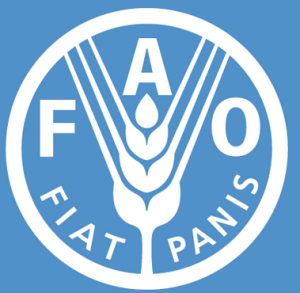Sustained demand in EU pushes global food prices up in 2016 – FAO
 Sustained demand from the European Union (EU) is pushing global food prices up in 2016, as captured by the FAO Food Price Index.
Sustained demand from the European Union (EU) is pushing global food prices up in 2016, as captured by the FAO Food Price Index.
Released last week, the Index averaged 172.6 points in October, up 0.7 per cent for the month and 9.1 per cent from a year earlier, with staple grains’ index rising for the first time in three months.
The FAO notes that the Food Price Index, which has risen continuously throughout 2016 except for a brief dip in July, is a trade-weighted index tracking international market prices for five major food commodity groups.
According to the Index, sugar and dairy prices primarily drove the jump in October’s rise.
“The FAO Sugar Price Index rose 3.4 per cent in October amid reports of production shortfalls in Brazil’s Centre South region and India’s Maharashtra state. The FAO Dairy Price Index rose 3.9 per cent from September, led by rising prices of cheese and in particular butter, as a result of sustained internal demand in the EU after a period during which stocks were drawn down,” it said.
By contrast, it said, the FAO Oils/Fats Price Index declined 2.4 per cent from September, largely linked to weaker palm oil quotations as a consequence of sluggish global import demand.
It notes that the FAO Meat Price Index also fell, dropping 1.0 per cent in October, with the drop largely driven by slacker demand for European pigmeat from importers in China.
“The FAO Cereal Price Index, meanwhile, rose 1.0 per cent in October, buoyed by tightening supplies of high-quality wheat even as the overall prospects for global wheat harvests have improved,” it said.
The Index however, indicates that world cereal production for 2016 should amount to 2,571 million tonnes, up marginally from FAO’s October forecast and 1.5 per cent above the 2015 output.
“The updated figure, released today in the Cereal Supply and Demand Brief, reflects a substantial upgrade of the outlook for world wheat production, which is now expected to rise to 746.7 million tonnes, a 4.3 million increase from FAO’s October forecast,” it said.
According to the Index, the Russian Federation’s wheat output is now anticipated to set a new record, while favourable weather is also boosting yield prospects in Kazakhstan, adding that, the increase in world wheat and barley production more than offsets the expected 4.8 million tonne decline in the 2016 global maize crop due to weather-induced yield downgrades for Brazil, China, the European Union and the United States of America.
“The forecast for global rice production was largely unchanged,” it added.
On the expectations for wheat, the Index states that early signs from the planting of the 2017 winter wheat crop in the northern hemisphere indicate that US farmers are reducing the area because of low price prospects and a subdued export outlook due to a stronger US dollar.
“However, wheat plantings in the Russian Federation and Ukraine are ahead of last year’s pace,” adding that “sowing of summer 2017 cereal crops is underway in southern hemisphere countries, and conducive weather conditions are leading to expansion in South America, and the maize area planted in Argentina is expected to expand by 6.0 per cent from last year’s high level.”
By Emmanuel K. Dogbevi
